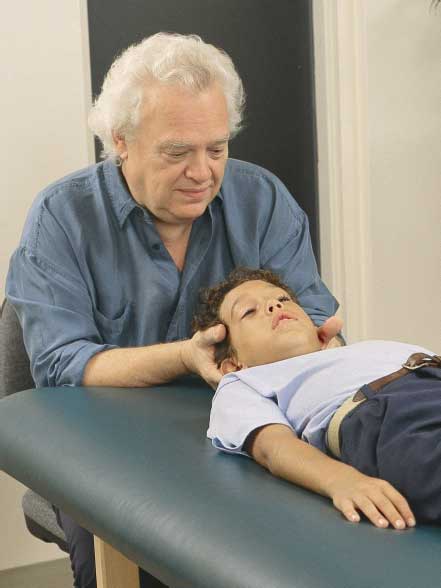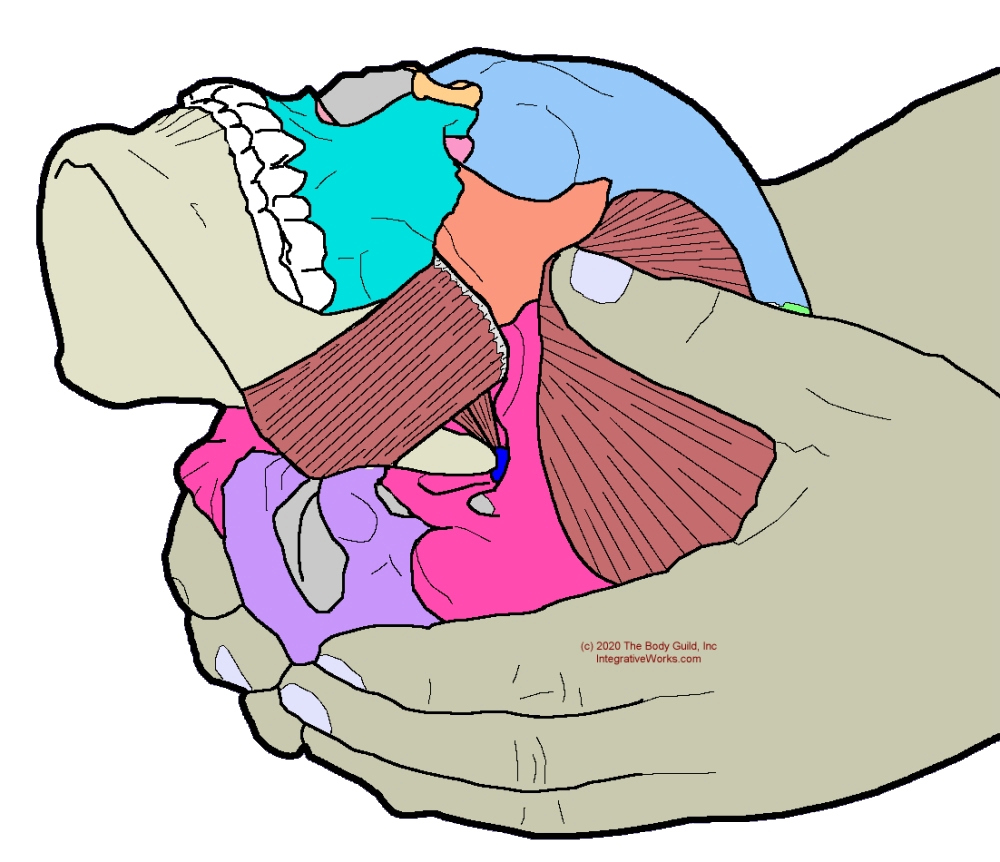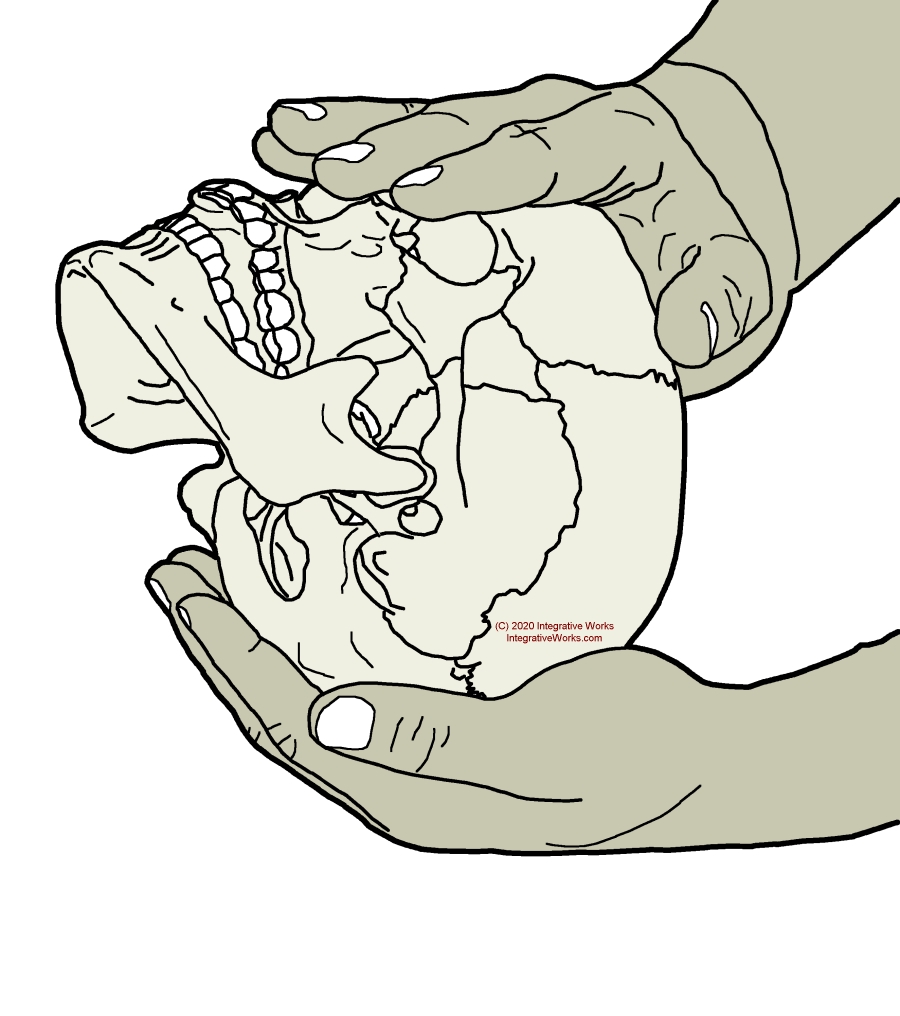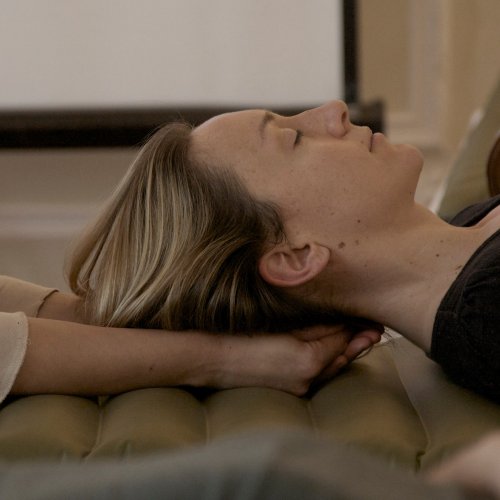
John Upledger was an innovative osteopath in the 70s and 80s. First, he wrote a small book called Your Inner Physician and You, a readable introduction to the value of craniosacral work. Then, he introduced his approach with the landmark book CranioSacral Therapy in 1980. He followed up with Beyond the Dura, a valuable reference for anatomy and physiology. Finally, in 1990, he completed this trilogy with Somatoemotional Release and Beyond.
Redefining the Craniosacral Landscape
Upledger became a dominant force in the world of bodywork. He fought to redefine craniosacral therapy as an approach that anybody could do safely and effectively with just a few days of training. Additionally, he branded himself as the founder of CranioSacral Therapy. His approach made craniosacral techniques available to people outside of the osteopathic profession. In fact, his technique was available to people who were not in healthcare.
Technique Integration
Upledger expanded this work into some other areas. Most notably, advanced courses focused on Somatoemotional Release. This mind/body approach combined craniosacral, breath work, dialoguing, and creative imagery to rid the body of energy cysts and other residual effects of trauma. Additionally, his courses were well known for incorporating CST with visceral manipulation. Presently, Upledger Institute offers many other forms of bodywork.

Changing the Landscape Divides the Field. Again.
On the one hand, this created intense conflicts. For osteopaths, this was an outrage. Osteopathic cranial became a more sacred and protected discipline. Further, counselors criticized Somatoemotional Release when practiced by people who aren’t healthcare professionals. For these and other reasons, our state does not allow CranioSacral Therapy as continuing education credits for massage and bodywork.
Additionally, cranial work from other bodywork approaches received great criticism from the Upledger Institute (UI). CranioSacral Therapy practitioners tend to be very loyal to UI. I was an instructor at the National Institute of Craniosacral Studies in the 90s. Then, it created a lot of frustration. Now, there is a chuckle of commiseration among practitioners that UI is still disapproving of our work.
Real Contributions to the Field
On the other hand, Upledger opened doors for therapists and other craniosacral practitioners outside of the osteopathic profession. Upledger redefined the work as soft tissue manipulation, fluid dynamics, and soft joint work. This did more than open the door for craniosacral to pair with bodywork. Now, every technique needs cranial work to be a complete approach.
Also, Upledger generated a tremendous amount of independent research on the craniosacral system’s anatomy and physiology. This research was exciting and notably helped the field. Prolifically, he produced many research articles and case studies on the effectiveness of his approach. His research covered topics from infertility and asthma to autism and depression.

Cranial Invades Bodywork
Once CranioSacral Therapy became a viable technique, every bodywork approach scrambled to incorporate some cranial work. For many, it was adding a cranial aspect to an already solid approach. Neuromuscular, Myofascial release, Polarity, and Structural Integration either added or focused on their cranial techniques.
Some of the instructors at UI spun off to create new versions of his work. For example, massage schools often had craniosacral in their survey classes or continuing education. Sharon Wiselfish and Frank Lowen, among others, split off to create variations on Upledger’s work.
Cranial Becomes a Staple
Still, others created an independent craniosacral approach independent of the Upledger model. I was an instructor of CranioSomatics at the National Institute of Craniosacral Studies under the brilliantly innovative work of G Dallas Hancock. Hugh Milne created a beautiful oversized text on Visionary Craniosacral. Biodynamic craniosacral, which was also developing outside of the osteopathic profession, spread back into the United States.
The Tide in CranioSacral Therapy
This approach looks at a cycle of 6-10 seconds, or what biodynamic practitioners call cranial-rhythmic impulses (CRI). CST is very focused on the energetic components of the craniosacral cycle.
Therapeutic Intervention in CranioSacral Therapy
CranioSacral Therapy is a biomechanical model with a strong focus on energetic, indirect, and Somatoemotional Release. Like biodynamic craniosacral, they see themselves as not making changes but observing the body as it heals itself. However, differently from biodynamic craniosacral, CranioSacral Therapy introduces light force in its treatment approach. Also, CranioSacral Therapy focuses on ridding the body of energy cysts through Somatoemotional Release, where biodynamic craniosacral focuses on connecting with The Tide so that it can heal the body.
The body is in a state of organized dysfunction.
CranioSacral Therapy Workshop Notes
We disorganize it and ask it to reorganize more functionally.
Light Touch
The touch is very light. Often, Upledger practitioners refer to using less than the weight of a nickel. However, many of their techniques, like the frontal lift, aren’t just light but purely intentional or energetic. Their techniques focus on releasing restrictions in the craniosacral system to improve the functioning of the central nervous system. Their primary work is famous for the initial 10-step protocol that releases restrictions in the craniosacral system and diaphragms that restrict its motility.
CranioSacral Therapy is strongly focused on indirect techniques in all areas. The biomechanical techniques are mostly indirect. In the advanced work, Somatoemotional releases are also indirect energy techniques. They profess that direct techniques violate and sublimate the will of the body.

My Experience with CranioSacral Therapy
I’ve studied John Upledger’s textbooks and still use Beyond the Dura as a reference in my practice. I’ve taken a few UI seminars and traded sessions with a number of his practitioners. In fact, I worked in a practice with mostly CranioSacral Therapy practitioners for about 18 months in the 90s. The proprietor of the practice was a chiropractor who taught with UI. I was amazed at how amplitude and balance of her craniosacral motion. There was a lot of SER work in the practice, regular study groups, and UI seminars held there.
Not My Thing
I don’t use much of this approach as I prefer other approaches in their implementation. Also, I have trouble integrating some of the concepts they espouse. Here are a few examples:
- When using force, even light force, indirect work cannot produce the changes that direct work does.
- I have trouble reconciling the concepts of using force, facilitating Somatoemotional release, and claiming that the therapist does not take responsibility for changes.
- I prefer creating regulatory and energetic changes through direct work that calms and organizes the relational field. Approaches like Integrative Craniosacral or Biodynamic Craniosacral facilitate those changes without cathartic releases.
- I prefer the precision of craniostructural techniques in biomechanical cranial work. However, UI instructors and students were dogmatic about hand positions, even when they were less effective in the osteopathic model.
I know many therapists who implement CranioSacral Therapy with excellent results. Just this month, I was in a seminar with a therapist who raved about CST’s results with her father, who has cognitive decline. But unfortunately, it just doesn’t integrate with my principles of practice.
Support Integrative Works to
stay independent
and produce great content.
You can subscribe to our community on Patreon. You will get links to free content and access to exclusive content not seen on this site. In addition, we will be posting anatomy illustrations, treatment notes, and sections from our manuals not found on this site. Thank you so much for being so supportive.
Cranio Cradle Cup
This mug has classic, colorful illustrations of the craniosacral system and vault hold #3. It makes a great gift and conversation piece.
Tony Preston has a practice in Atlanta, Georgia, where he sees clients. He has written materials and instructed classes since the mid-90s. This includes anatomy, trigger points, cranial, and neuromuscular.
Question? Comment? Typo?
integrativeworks@gmail.com
Interested in a session with Tony?
Call 404-226-1363
Follow us on Instagram

*This site is undergoing significant changes. We are reformatting and expanding the posts to make them easier to read. The result will also be more accessible and include more patterns with better self-care. Meanwhile, there may be formatting, content presentation, and readability inconsistencies. Until we get older posts updated, please excuse our mess.



